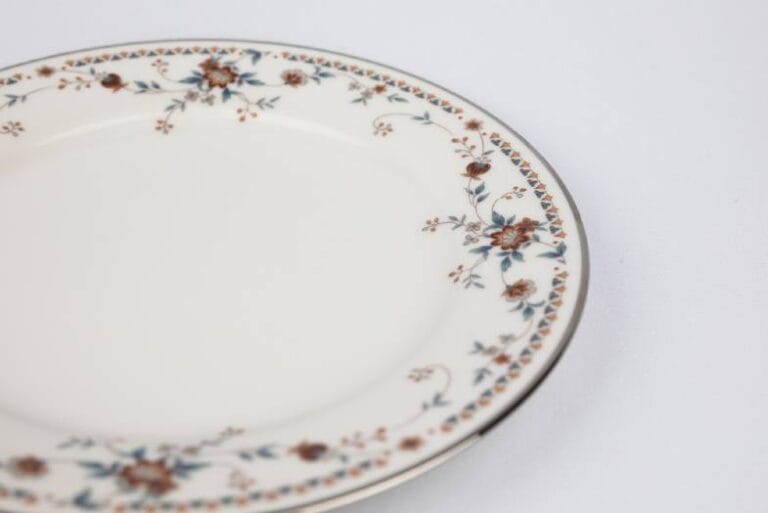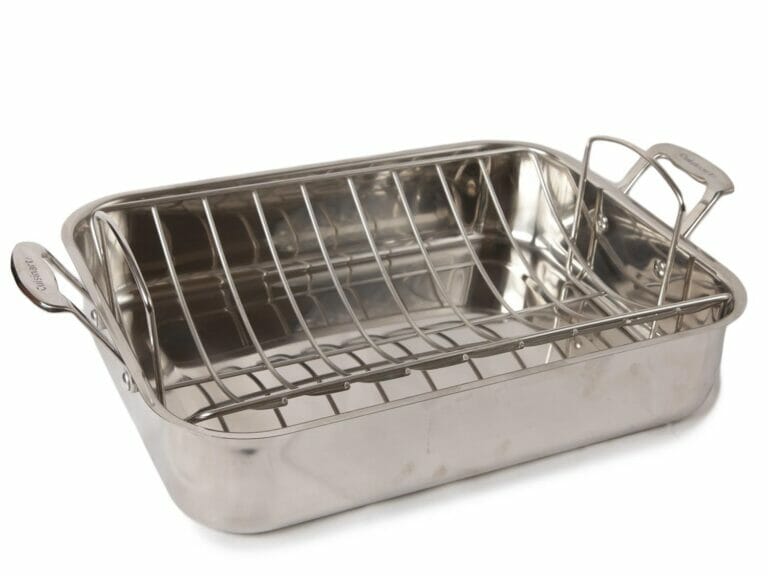
Are you tired of your stainless steel saucepans losing their shine and developing unsightly discoloration? Don’t worry, we’ve got you covered! In this article, we’ll share some valuable tips on how you can prevent discoloration of stainless steel saucepans.
Stainless steel is a popular choice for cookware due to its durability and sleek appearance. However, over time, stainless steel saucepans can develop stains and discoloration that can be quite stubborn to remove. But fear not, because, with a little know-how, you can keep your saucepans looking as good as new!
How to Prevent Discoloration of Stainless Steel Saucepans?
- Clean the saucepans thoroughly after every use with mild soap and warm water.
- Avoid using abrasive scrubbers or cleansers that can damage the stainless steel surface.
- Regularly remove any burnt-on food or stains by soaking the saucepan in a mixture of vinegar and water.
- Use a non-abrasive stainless steel cleaner to restore the shine and remove any stubborn stains.
- Apply a thin layer of cooking oil to the stainless steel surface before each use to create a protective barrier.
By following these steps, you can keep your stainless steel saucepans looking clean and free from discoloration.
1. Proper Cleaning and Maintenance
Regular cleaning and maintenance are key to preventing discoloration of stainless steel saucepans. After each use, wash the pans using warm soapy water and a soft sponge or cloth. Avoid using harsh abrasives or steel wool, as these can scratch the surface.
Dry the saucepans thoroughly after washing, as leaving them wet can lead to water spots and stains. To maintain the shine, you can use a stainless steel cleaner or a homemade solution of vinegar and water to remove any stubborn stains or discoloration.
Additionally, it’s important to avoid storing food or liquids in stainless steel saucepans for extended periods of time, as this can cause acidic reactions that result in discoloration. Instead, transfer leftovers into appropriate storage containers once the cooking process is complete.
Lastly, avoid exposing stainless steel saucepans to excessive heat, as this can lead to discoloration. Use medium to low heat whenever possible and avoid using high heat for prolonged periods.
2. Gentle Scrubbing with Baking Soda
If your stainless steel saucepans develop stubborn stains or discoloration, one effective method to remove them is by using baking soda. Create a paste by mixing baking soda with water until it forms a thick consistency.
Apply the paste onto the stained area and gently scrub using a non-abrasive sponge or cloth. The baking soda acts as a natural abrasive and can help remove the discoloration without causing damage to the surface of the saucepans. Rinse thoroughly after scrubbing and dry with a soft cloth to restore the shine.
If the discoloration persists, you can also try using a mixture of baking soda and vinegar. Apply the paste onto the stained area, allow it to sit for a few minutes, then scrub gently. The combination of baking soda and vinegar can help break down stubborn stains and restore the shine to your stainless steel saucepans.
It’s important to note that while baking soda is generally safe to use on stainless steel, it’s always recommended to test it on a small and inconspicuous area of the saucepan first to ensure compatibility and avoid any potential damage.
3. Avoiding Chemical Reactions
Chemical reactions can occur when certain foods and ingredients come into contact with stainless steel saucepans, leading to discoloration. One common reaction is the presence of salt or salty foods in stainless steel pans for extended periods.
To prevent this, add salt to boiling water rather than directly to the saucepan. Similarly, acidic ingredients such as lemon juice, vinegar, and tomatoes can cause discoloration when left in stainless steel pans for prolonged periods. It’s best to cook these ingredients in other cookware and transfer them into stainless steel saucepans just before serving.
Furthermore, it’s important to avoid using harsh chemicals or abrasive cleaners on stainless steel saucepans, as these can damage the surface and lead to discoloration. Stick to gentle cleaning solutions and avoid using metal utensils that can scratch the surface.
By being mindful of the ingredients and cooking techniques used with your stainless steel saucepans, you can prevent discoloration and maintain their shine for years to come.
Frequently Asked Questions
Welcome to our FAQ section where we answer commonly asked questions about preventing discoloration of stainless steel saucepans. Read on to find helpful tips and tricks!
1. How can I prevent discoloration of my stainless steel saucepans?
To prevent discoloration of stainless steel saucepans, there are a few key steps you can take. Firstly, always use low to medium heat when cooking in stainless steel pans. High heat can cause discoloration and even scorch marks on the surface.
Additionally, avoid using metal utensils with your stainless steel pans, as they can scratch the surface and create areas where discoloration may occur. Instead, opt for wooden or silicone utensils. Lastly, always clean your stainless steel saucepans after use, as lingering food particles or stains can lead to discoloration over time.
By following these guidelines, you can maintain the appearance of your stainless steel saucepans and prevent discoloration from occurring.
2. Is there anything specific I should avoid cooking in stainless steel saucepans?
While stainless steel saucepans are versatile and great for many types of cooking, there are some foods you should avoid cooking directly in them to prevent discoloration. Foods high in acid, such as tomatoes, citrus fruits, and vinegar-based sauces, can react with the stainless steel and cause discoloration.
To avoid this, it’s recommended to cook these types of acidic foods in non-reactive pans like enamel-coated or nonstick pans. If you do need to cook acidic foods in stainless steel saucepans, try using a heat-resistant lining like parchment paper or a glass dish to create a barrier between the food and the pan’s surface.
By being mindful of the foods you cook in your stainless steel saucepans, you can prevent discoloration and keep them looking their best.
3. How often should I clean my stainless steel saucepans to prevent discoloration?
To prevent discoloration, it’s recommended to clean your stainless steel saucepans after each use. This helps remove any food particles or stains that can lead to discoloration over time. Here’s a simple cleaning routine to follow:
Start by soaking the pan in warm, soapy water for a few minutes to loosen any stubborn residue. Then, use a gentle scrub brush or non-abrasive sponge to clean the pan, paying extra attention to any areas with stains or discoloration. Rinse thoroughly with warm water and dry immediately with a soft cloth or towel to prevent water spots. Regular cleaning and maintenance will help keep your stainless steel saucepans in top shape and prevent discoloration from occurring.
4. Can I use stainless steel cleaners to prevent discoloration?
Stainless steel cleaners can be used to help prevent discoloration and keep your saucepans looking pristine. However, it’s important to choose a cleaner specifically designed for stainless steel cookware and follow the manufacturer’s instructions.
Avoid using abrasive cleaners or scrub brushes, as these can scratch the surface of the pans and potentially cause discoloration. Instead, opt for non-abrasive cleaners and gentle cleaning tools to maintain the shine of your stainless steel saucepans.
Remember to always test the cleaner on a small, inconspicuous area of the pan first to ensure compatibility and avoid any potential adverse reactions. With proper care and the right cleaner, you can keep your stainless steel saucepans looking their best and prevent discoloration.
5. Are there any natural methods to prevent discoloration of stainless steel saucepans?
Yes, there are natural methods you can try to prevent discoloration of your stainless steel saucepans. One effective method is mixing equal parts water and white vinegar. Simply apply this mixture to the surface of the pan and let it sit for a few minutes before rinsing off with warm water. The acidic properties of vinegar can help remove stains and prevent discoloration.
Another natural option is to use a paste made from baking soda and water. Apply the paste to the affected area, let it sit for a while, and then scrub gently with a non-abrasive sponge or cloth. This can help lift stains and restore the shine of your stainless steel saucepans.
It’s important to note that when using natural methods, always test them on a small, inconspicuous area of the pan first to ensure they don’t cause any adverse reactions. Natural methods may require a bit more effort compared to commercial cleaners, but they can be effective in preventing discoloration and maintaining the beauty of your stainless steel saucepans.
To prevent discoloration of stainless steel saucepans, there are a few important things to remember. Firstly, avoid using harsh abrasives or scrubbers when cleaning the pans, as this can scratch the surface. Instead, opt for mild dish soap and a soft sponge.
Secondly, be mindful of the heat you use while cooking. High heat can cause the stainless steel to discolor or develop a rainbow-like effect. It’s best to cook with low to medium heat to avoid this. Lastly, try using a stainless steel cleaner or vinegar to restore the shine and remove any stains or discoloration that may occur over time. With these tips, your stainless steel saucepans will stay looking great for years to come!






